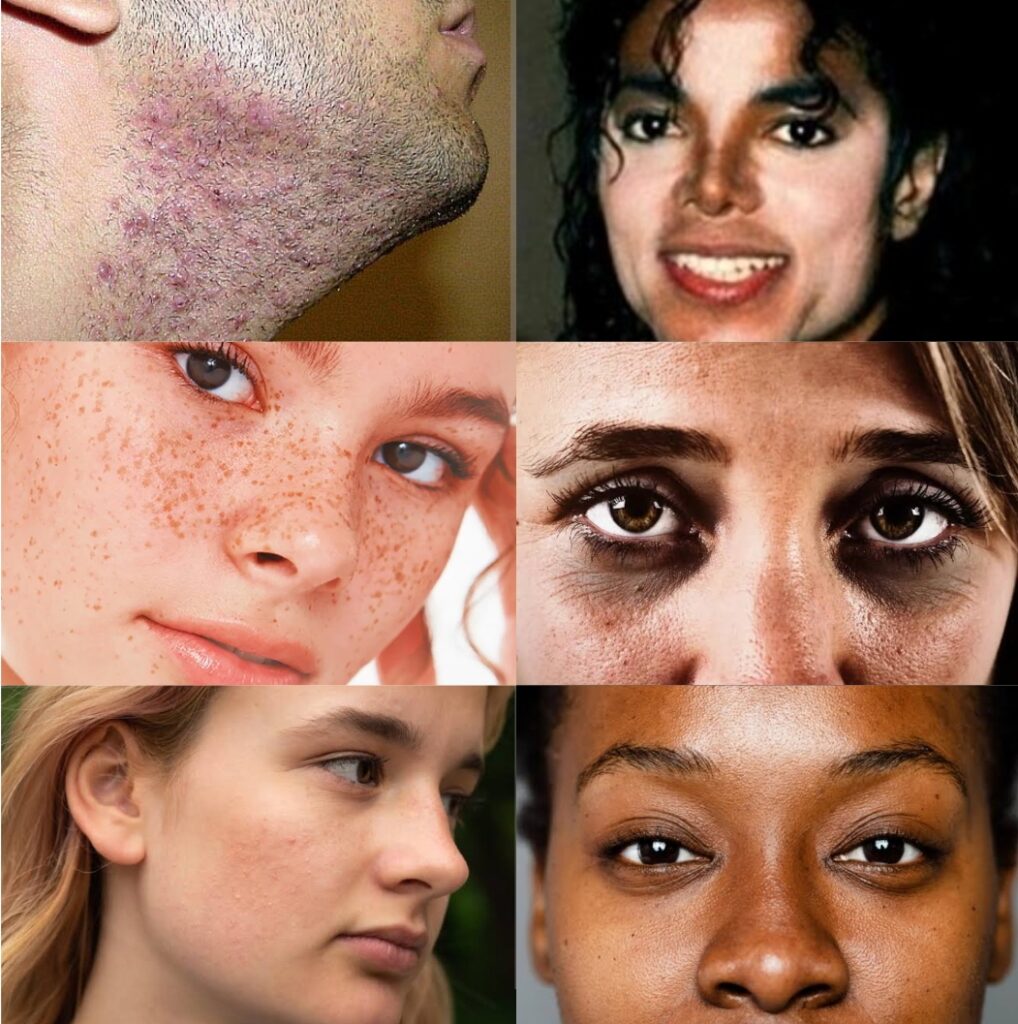
The skincare and cosmetics market has expanded tremendously over the last few years, responding to the requirements of a diversified population with new issues. The level of these worries frequently ranges from mild to severe. Although a dermatologist should investigate more serious issues, some over-the-counter medications might be available to relieve some symptoms. Additionally, the consumer skincare sector primarily focuses to disorders that are essentially cosmetic and don’t call for urgent care or prescription treatment. You might be surprised at the range of consumer-friendly solutions, though, depending on your particular wants and concerns.
Learn more about the most typical skincare issues in the following articles, along with what you can do to solve them.
1. Dry and Cracked Skin

People who live in dry climates are more prone to have dry, cracked skin. Using an indoor humidifier or taking a cold shower are a couple of ways you can add moisture to your environment. It’s also crucial to regularly use a moisturizer and drink a lot of water to aid with dry, cracked skin. Age is another well-known cause of dry skin, in addition to a dry environment.

The collagen and elastin fibers in our skin degrade with age, impairing the skin’s capacity to retain moisture naturally. Although dry and cracked skin is not a significant issue, it may indicate that you are dehydrated and need to increase your intake of water.
2. Under Eye Bags and Dark Circles

Undereye bags and circles are recurrent issues that are mainly caused by aging, heredity, allergies, nutrition, and sun exposure in addition to not getting enough sleep. In terms of physiology, weakened, sagging skin, which happens more frequently as we age, is the cause of bags beneath the eyes. Because extra body fluids might collect close to the eyes when we sleep, these bags are more obvious when we wake up from sleep. Undereye circles and bags are mostly just aesthetic issues that don’t need to be treated by a doctor.
3. Rosacea

A prevalent skin condition that affects roughly Rosacea affects more than 40 million people worldwide and is most common in people aged between 30 and 50. It’s also referred to as acne. On the face, the illness develops tiny, red lumps that are filled with pus. Fair-skinned, middle-aged women have rosacea the most often, although it can even affect children.
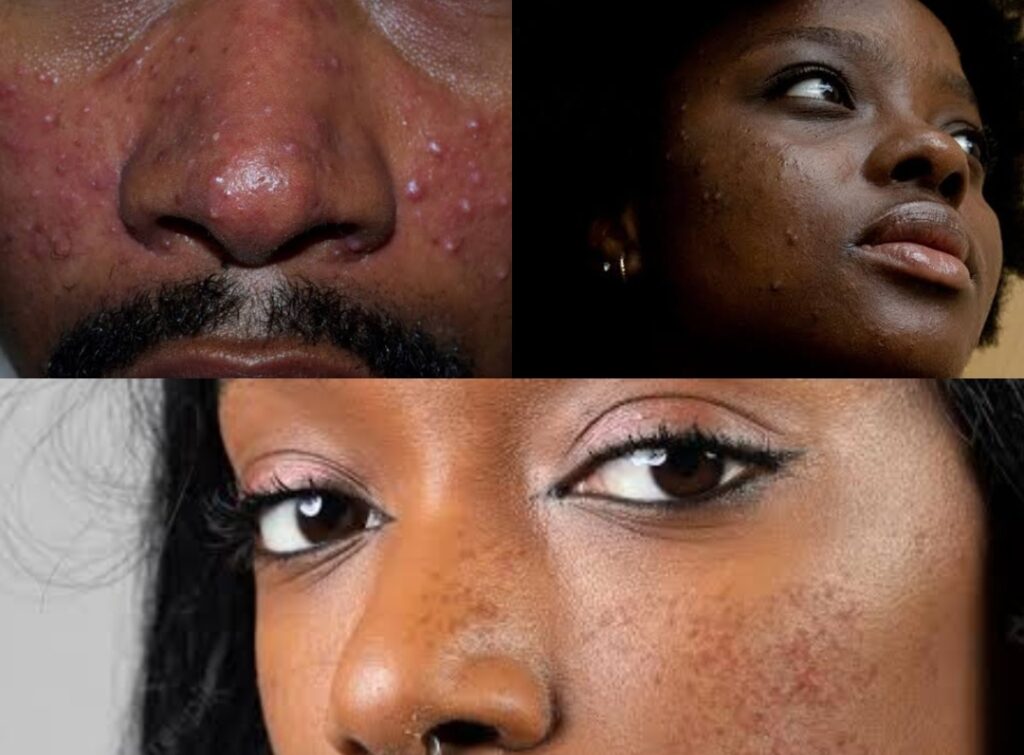
In fact, rosacea can cause a persistent redness in the centre of the face if it is not treated in children. Antibiotics and acne creams were used in the treatment of rosacea, which is not hazardous to health.
4. Contact Dermatitis

Contact dermatitis is a skin rash that is caused by contact with certain substances or objects. The substance may irritate the skin or cause an allergic reaction. Certain types of fabrics, soaps, cosmetics, jewelry, and other common items are known to be the main culprits of dermatitis. A dermatitis rash is usually red with itchiness or swelling. In some cases, the rash can be painful. The best way to avoid contact dermatitis is to limit contact with the objects or substances that caused the rash. Common treatments for contact dermatitis include creams, cold compression, steroids, and antibiotics.
5. Acne
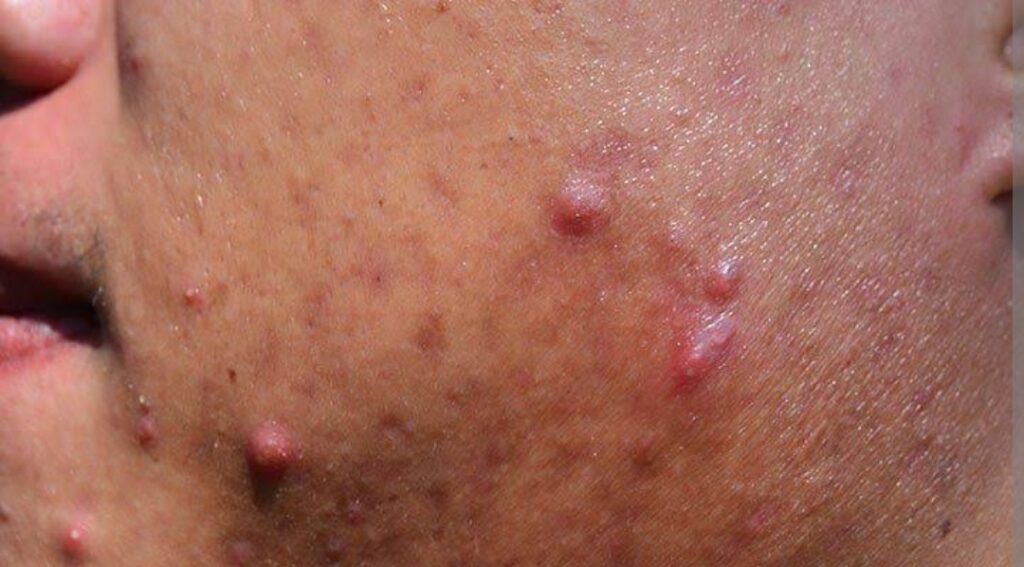
Acne, also known as acne vulgaris, is one of the most common skincare problems that affects teens and young adults with the onset of puberty. Acne occurs as a result of hair follicles being congested with oils and dead skin cells. Acne expresses itself as blackheads, whiteheads, pimples, oily skin, and scarring. The parts of the body mostly affects by acne include the face, back, and chest. Most acne will go away on its own over time. The best at-home remedies include washing the face and body, and using moisturizers that don’t clog pores. In more serious cases, a dermatologist will recommend anti-inflammatory creams and antibiotics.
6. Scars
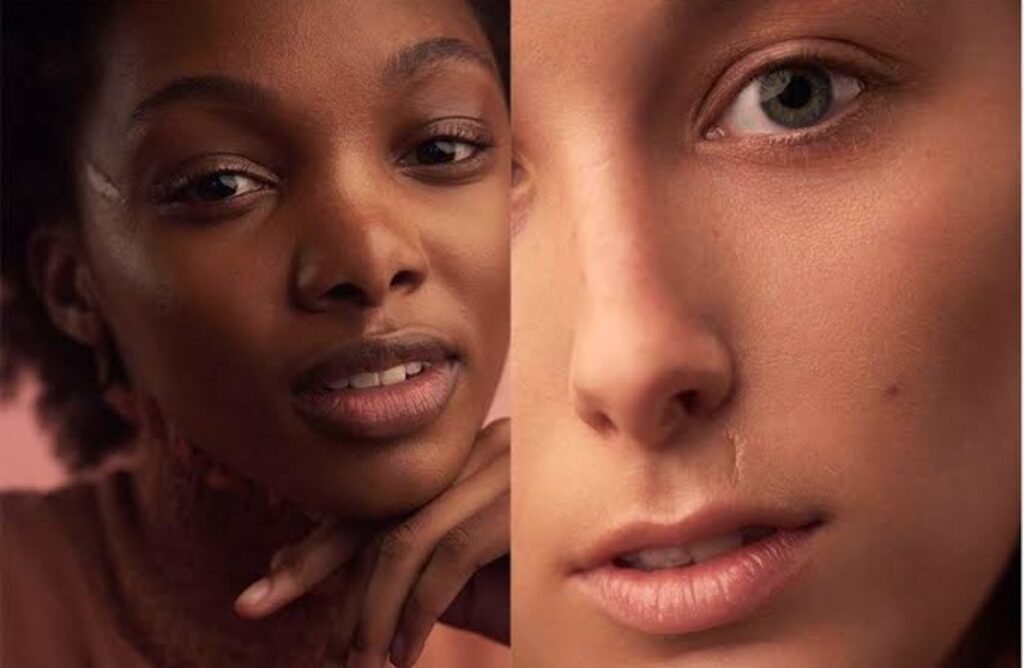
Scars are another skin care concern that many people have, particularly after a surgery or injury. The most aggressive scar types, and the types that people want to avoid, include keloids and hypertrophic scars. These scar types are marked by their raised, ropey, and discolored appearance. The best way to treat scars is to use clinically-proven methods and doctor-recommended therapies, such as medical silicone gel. Silicone gel works by inducing hydration at the scar site to signal to the body to cut down on collagen production in that area. When collagen levels go down to a normal level, scars will respond by flattening and turning a normal color.
7. Sunburn
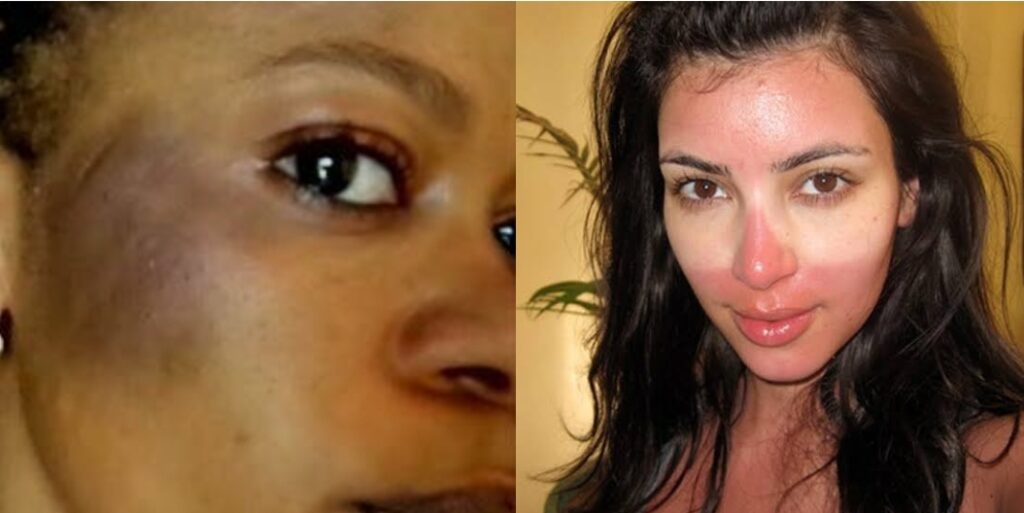
Sunburn is inflamed, painful skin that feels hot to the touch. It often appears within a few hours of being in the sun too long.
You can get sunburn relief with simple self-care measures such as taking pain relievers and cooling the skin. But it may take days for the sunburn to fade.
Preventing sunburn year-round by wearing sunscreen or using other skin-protection habits is important for everyone. It is especially important when you’re outdoors, even on cool or cloudy days.
8. Wrinkles
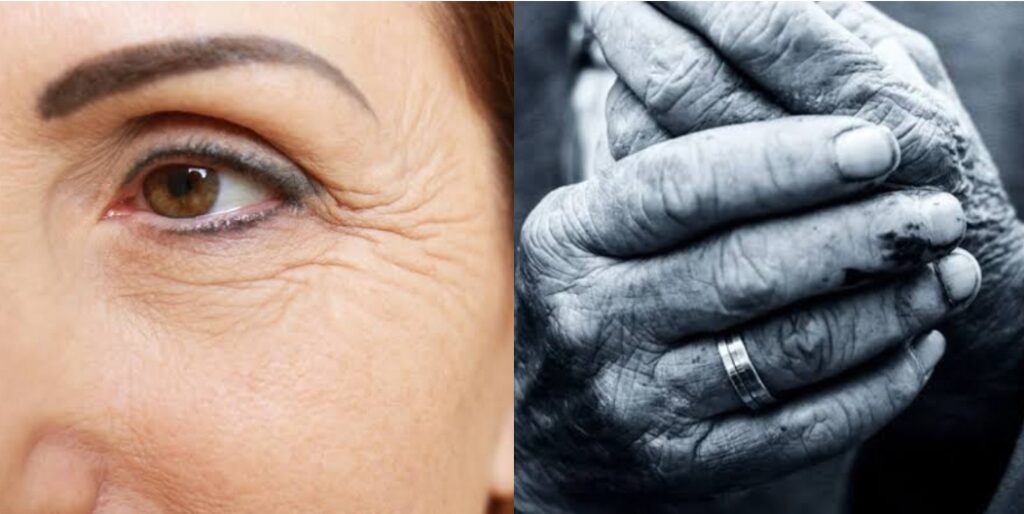
Over time, skin begins to wrinkle. Things in the environment, like ultraviolet (UV) light from the sun, can make the skin less elastic. Gravity can cause skin to sag and wrinkle. Certain habits, like smoking, also can wrinkle the skin.
Again, wrinkles are a natural part of the aging process as the elastic bonds in your skin begin to break down, hindering your skin’s ability to retain moisture. Simultaneously, the fat underneath our skin layers begins to deplete, eventually causing folds and creases in the skin, or wrinkles.
A lot of claims are made about ways to make wrinkles go away. Most of them don’t work.
There have been many advances made in just the last several years to minimize the look of wrinkles, from injections to dermal fillers to microdermabrasion. There are also effective means of preventing wrinkles from occurring in the first place, but the most important ways are simply to protect your skin by avoiding sun exposure and smoking.
Moreover, using Some medical methods can be painful or even dangerous, and many must be done by a doctor specially trained in skin problems, called a dermatologist, or your regular doctor if you are worried about wrinkles.
9. Hyperpigmentation

Another common skin condition is called hyperpigmentation. Hyperpigmentation refers to brownish patches that can appear on the skin as a person ages (it can also be a result of acne). Also known as “liver spots,” these benign patches can often resemble large freckles and usually appear on the face, neck, hands, feets, and legs. While these spots are not harmful, many people opt to have them removed for cosmetic reasons.
10. Eczema
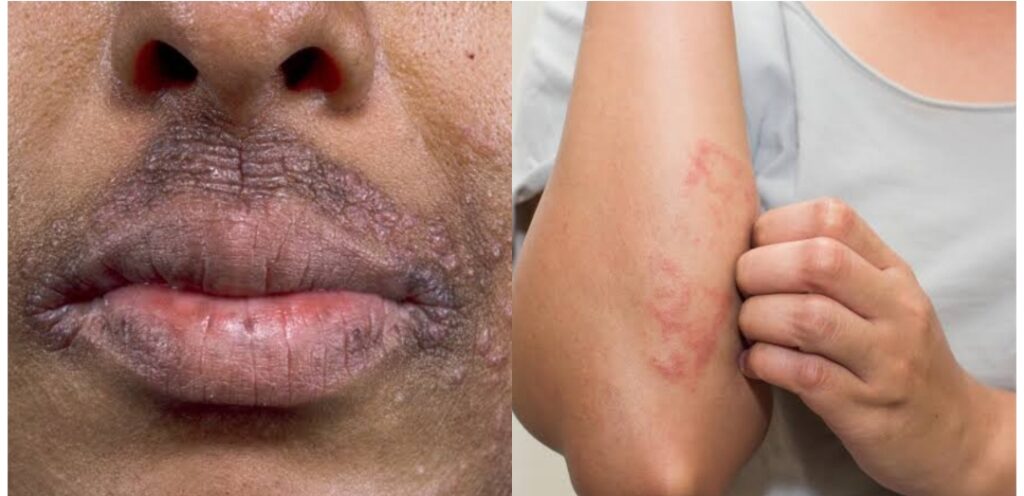
Eczema is a condition that can make your skin dry and itchy. Also known as dermatitis, which means inflammation of the skin, there are several different kinds of eczema that exist. While it is very common in children, eczema can occur at virtually any age. The cause of eczema remains to be unknown, but medical professionals have found that the oil barrier of the skin tends to be reduced in people with eczema. This can lead to an increase in water loss, which can leave your skin feeling dry and irritated.
11. Psoriasis

is a chronic skin disorder that can lead to the scaling of the skin as well as inflammation. This skin issue typically arises in men and women between the ages of 15 and 35, but it can occur at anytime. This skin disorder is believed to be an abnormality in the body’s immune system, but there are various topical treatments available to help relieve its symptoms.
12. Sensitive and Inflamed Skin
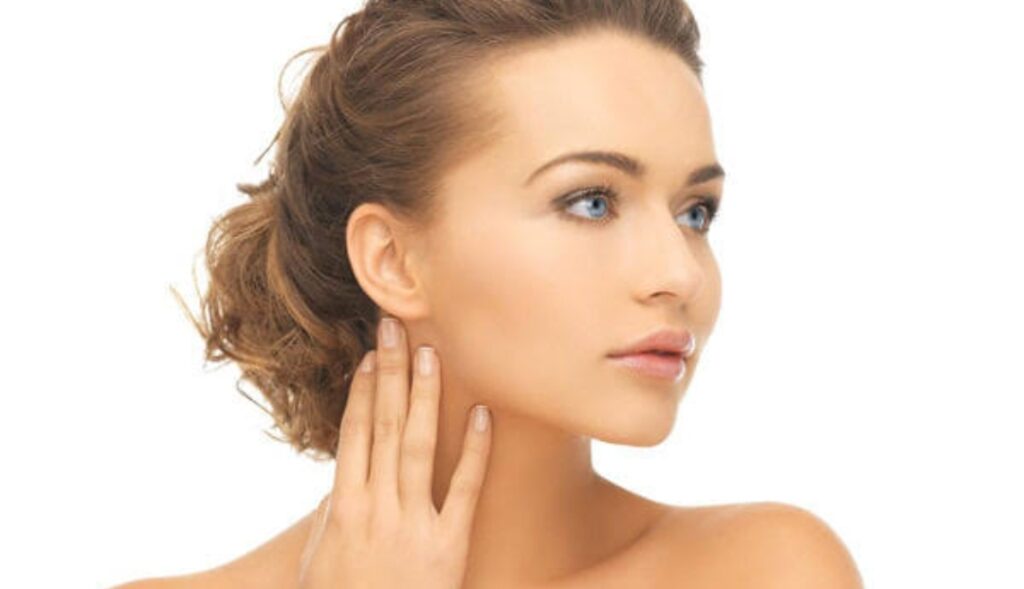
Skin inflammation and skin sensitivity are more common than you’d think. These skin concerns aren’t always recognized by those who suffer from them, as they can come with a wide range and intensity of symptoms. These include redness and puffiness, rough skin texture, and stinging.
Skin inflammation and sensitivity can be exacerbated by high-sugar diets. If you’re suffering from inflamed skin, we recommend switching to an anti-inflammatory diet, or at least reducing the number of inflammatory foods you consume. Getting enough exercise, sleep, and hydration can also help to fight inflammation throughout your body.
13. Aging Skin

Skin aging is inevitable, but some of us will experience more severe symptoms than other. These symptoms can include fine lines and wrinkles, dark spots, rough skin texture, and uneven complexion. The best way to prevent these symptoms is by limiting sun exposure throughout your life, and protecting your skin with sunscreen.
Luckily, though, there are also ways to mitigate the effects of aging. Antioxidants like vitamin E and vitamin C can help to fight free radicals, electric charges in the skin which are created as a response to sunlight, pollution, smoking, and other environmental factors. Free radicals are a major cause of skin aging; so by supplying your skin with antioxidants, you can help to support your skin health and combat the symptoms of aging. You can do this both through your diet and by using antioxidant-rich skincare products
14. Large Pores

Large pores are normally caused by genetic factors, and–no matter what a product may claim–it’s not actually possible to shrink their size. However, you can take steps to clear up any oil that may be blocking your pores, further increasing the appearance of their size.
The best products for reducing the appearance of large pores are exfoliants (both chemical and mechanical) and oil-absorbing products. Exfoliants help to lift away the outermost layer of dead skin, freeing up your pores and brightening your complexion. You might choose to use an exfoliating scrub two or three times a week, use a higher-strength peel once a week, or see a dermatologist for a dermaplaning procedure every few months.
15. Dull Skin

Dull skin essentially means a lackluster, unhealthy complexion. This can occur for many reasons, but the two most common ones are a buildup of dead skin cells, and a lack of oxygen supply in the skin.
If your skin is looking dull due to a buildup of skin cells, this is a fairly simple problem to solve. Just try to add a mechanical or chemical exfoliant to your skincare routine. You can use an exfoliating scrub two to three times a week, or a stronger peel once every week or two. Exfoliation will help to banish dead skin cells, revealing the healthy, glowing skin below.
If your skin is looking dull because it’s not getting enough oxygen, then you may want to take steps to improve your circulation. These can include getting enough exercise and eating a balanced diet.
16. Skin Cancer

There are three basic forms of skin cancer: basal cell carcinoma, squamous cell carcinoma and malignant melanoma. Anyone can be diagnosed with cancer at any age. Doctors link these forms of cancer to overexposure to the sun. Tanning booths can also increase your risk, as can exposure to radiation or high altitude. Because each type of skin cancer has a different look, effect and treatment, it is important to alert your physician if you notice unusual changes in the size and shape of spots, the coloration of your skin or the sensitivity and comfort of your body. Time is of the essence, and when caught early, many forms of skin cancer can be successfully treated.
17. Stretch Marks
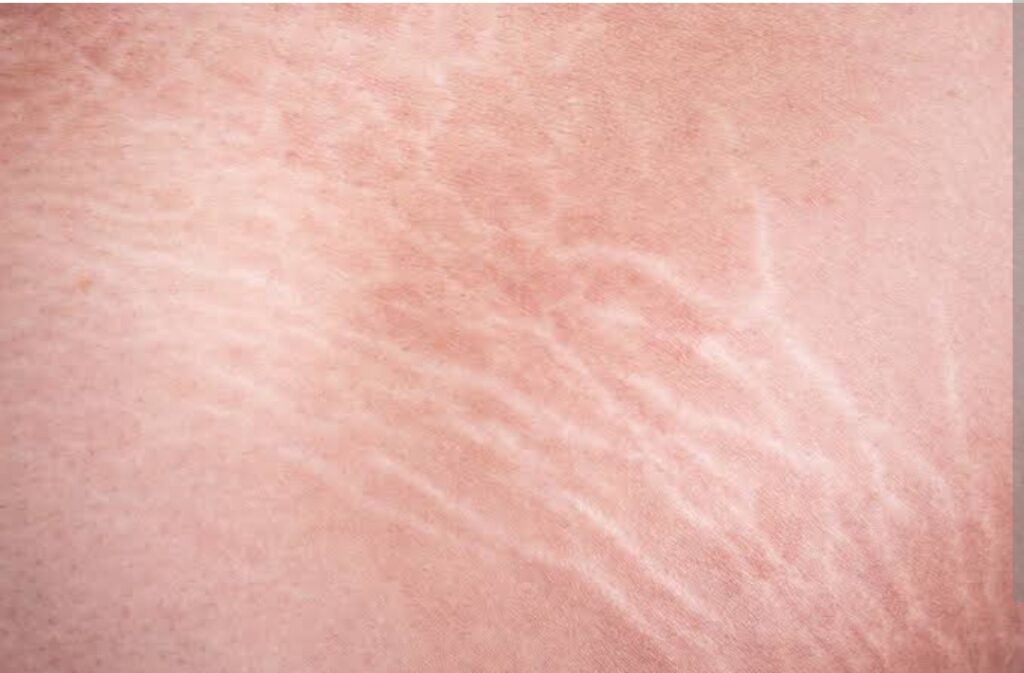
Stretch marks, also known as striae, are typically caused when growth or weight gain causes skin to stretch beyond its normal limit of elasticity. The rapid skin expansion results in an off-hue stria, usually a blue or red color. Though stretch marks are usually associated with obesity, they can occur during any period of rapid growth or skin expansion, such as rapid muscle growth, a “growth spurt” during puberty, or pregnancy. Though stretch marks do not pose a health risk, and do not indicate any inability for the skin to heal or stretch, they are a common cosmetic worry, and treatments for stretch marks do exist, including laser treatments and microneedling.
18. Spider Veins
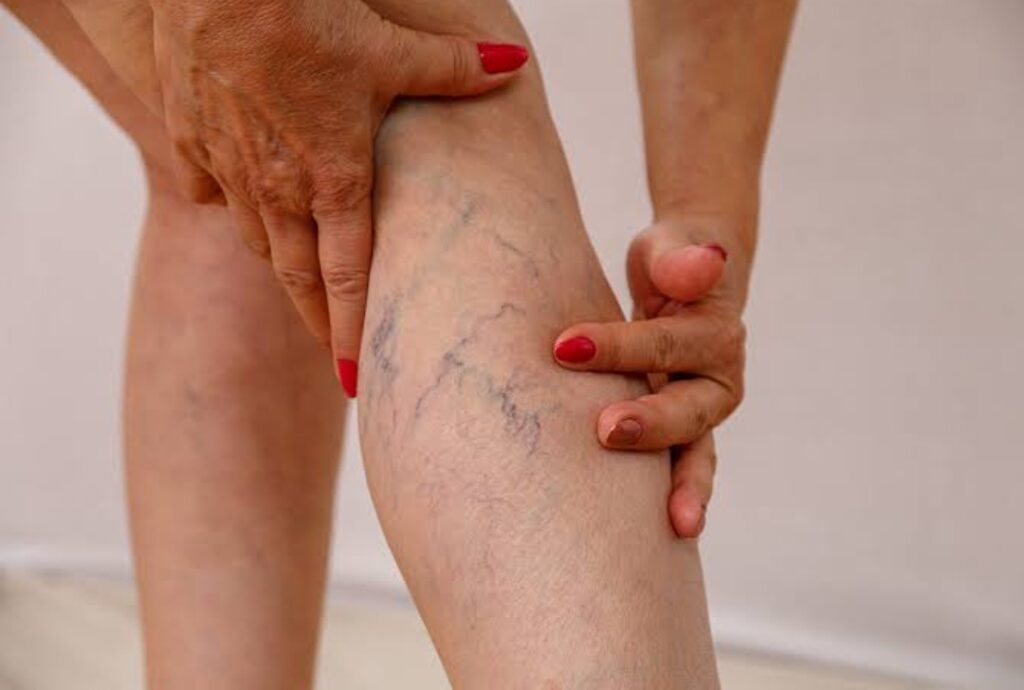
When you see red or blue marks resembling spider webs or tree branches on a body part (commonly the legs and face), these are typically spider veins. Spider veins are similar to varicose veins, but smaller and closer to the surface of the skin, while varicose veins are larger and deeper. Veins act as a way to get blood from body parts back to the heart, and come with one-way flaps to prevent blood from flowing backwards. If these flaps deteriorate or malfunction, blood can flow back into the veins and pool there, causing the visual effect of spider veins. This condition is usually associated with age and obesity, but can also be affected by hormone changes, smoking, heredity and sun overexposure. Several treatments for spider veins exist, including laser-based solutions and sclerotherapy, where a saline solution is injected into the vein in order to close it.
19. Dehydration
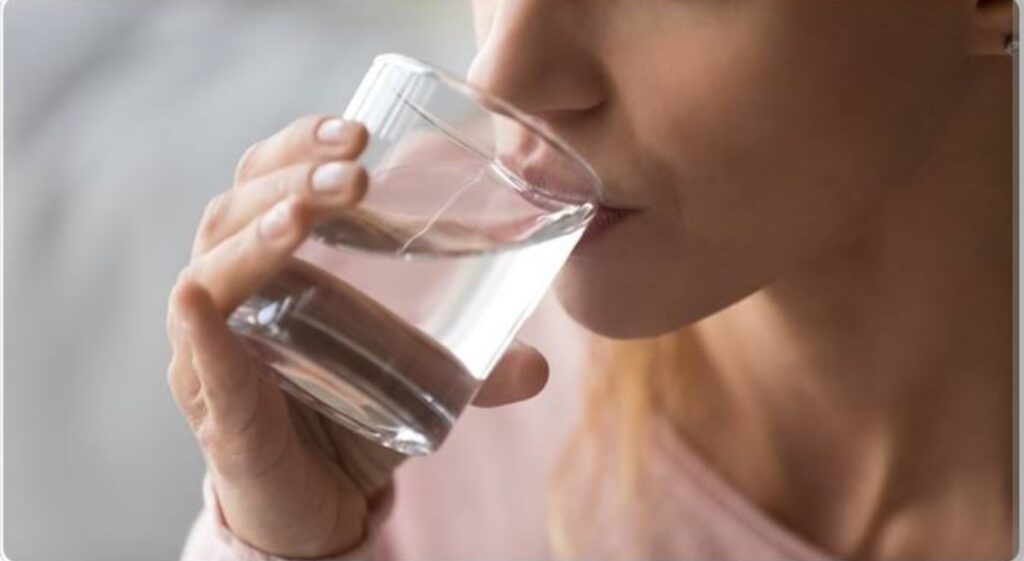
Dehydration occurs when you use or lose more fluid than you take in, and your body doesn’t have enough water and other fluids to carry out its normal functions. If you don’t replace lost fluids, you will get dehydrated.
Anyone may become dehydrated, but the condition is especially dangerous for young children and older adults.
The most common cause of dehydration in young children is severe diarrhea and vomiting. Older adults naturally have a lower volume of water in their bodies, and may have conditions or take medications that increase the risk of dehydration.
This means that even minor illnesses, such as infections affecting the lungs or bladder, can result in dehydration in older adults.
Dehydration also can occur in any age group if you don’t drink enough water during hot weather — especially if you are exercising vigorously.
You can usually reverse mild to moderate dehydration by drinking more fluids, eat foods high in water such as fruits and vegetables but severe dehydration needs immediate medical treatment.
20. Age Spots/ Liver Spots
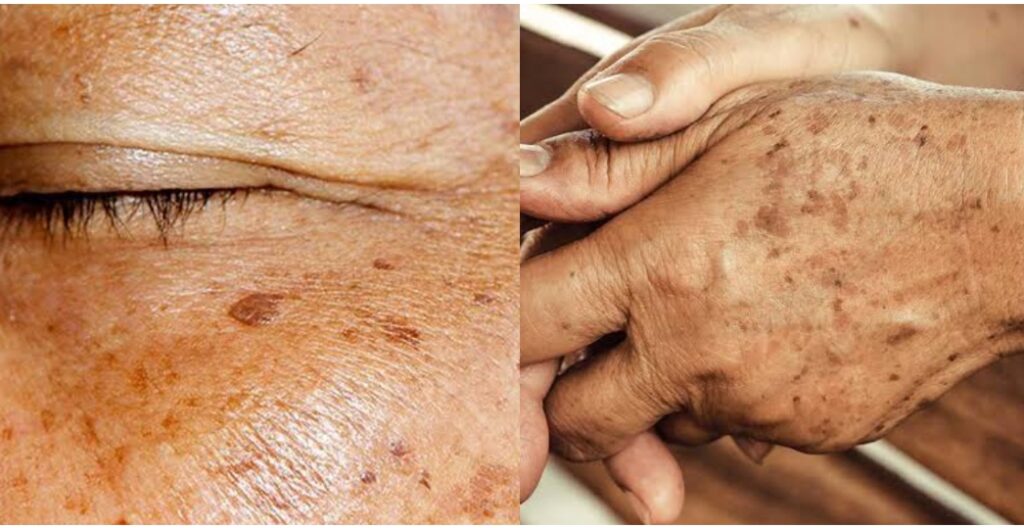
Have you noticed a mark that resembles a large freckle on the back of your hand or on your cheek? You may be looking at what’s known as an age spot.
Age spots are flat brown, gray, or black spots on the skin. They usually occur on sun-exposed areas, like the backs of your hands and your face. Age spots are also called liver spots, senile lentigo, solar lentigines, or sun spots.
It’s not uncommon for a single age spot to appear, or for a few to cluster together.
While they may begin developing at an early age, and even during childhood, they’re most common in middle age and older adulthood, especially if you spend a lot of time in the sun.
The good news: Age spots aren’t cancerous, and they don’t develop into cancer, either.
causes of age spots: Age spots typically happen due to an excess production of melanin, or skin pigment. Experts don’t know exactly why age spots develop, but some people do have a hereditary predisposition to them. In other words, you may have a higher chance of age spots if they run in your family.
Other possible causes include skin aging, ultraviolet (UV) light exposure, such as tanning beds, and sun exposure. That’s why you’re most likely to develop age spots on areas of your skin that receive the most sun, such as: your face, the backs of your hands, your shoulders, your upper back, your forearms
Medical treatment: A dermatologist may prescribe bleaching creams to help fade the age spots gradually. These creams usually contain hydroquinone and sometimes retinoids, such as tretinoin.
Just keep in mind that these creams usually take several months to fade age spots.
Also note that bleaching and tretinoin creams can leave your skin more sensitive to UV damage. It’s essential to wear sunscreen at all times, both during treatment and afterward — even on cloudy and overcast days.
21. Cold Sore
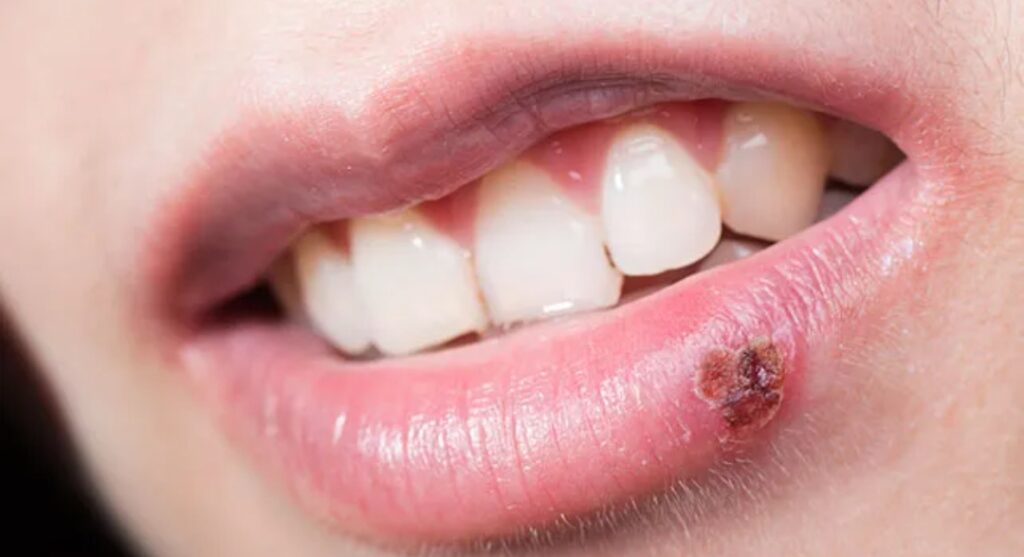
Cold sores are red, fluid-filled blisters that form near the mouth or on other areas of the face. The herpes simplex virus causes them, most commonly type 1.
Cold sores are usually clumped together in patches. They may persist for two weeks or longer. In rare cases, cold sores may appear on the fingers, nose, or inside the mouth.
These sores can spread from person to person through close contact, such as kissing. The sores are contagious even when they’re not visible.
There’s no cure for cold sores, and they may return without warning. Certain medications can treat cold sores and prevent them from returning.
22. Pimples

Pimples are a common skin condition caused by clogged or inflamed oil glands or an increased presence of pimple-causing bacteria on your skin. They’re a symptom of acne, and there are many different types, including blackheads, whiteheads, cysts and others. Treatments include home remedies and over-the-counter and prescription pills and gels.
23. Allergic Contact Dermatitis
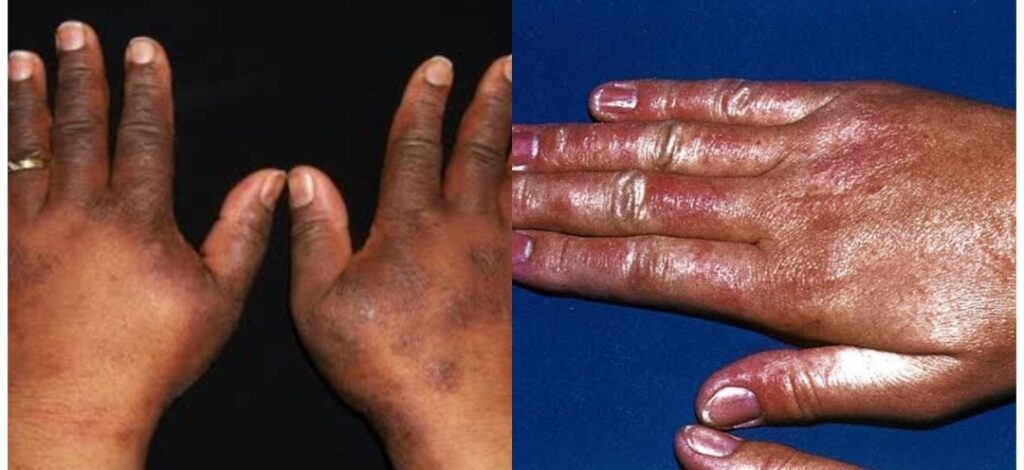
Another important skin disorder caused by cosmetics is allergic contact dermatitis, which occurs less frequently than irritant contact dermatitis. It is often difficult to differentiate between the two by the appearance of the rash alone. Cosmetics ingredients that can cause skin allergy include fragrances, preservatives and sunscreens.
You should stop applying all cosmetics on the affected skin or anywhere else immediately. Your doctor will prescribe a topical or — in severe cases — oral corticosteroid to reduce the skin inflammation. Oral antihistamines may reduce intense itching. Patch testing should be done when the rash subsides to ascertain the cause of allergy.
24. Hives
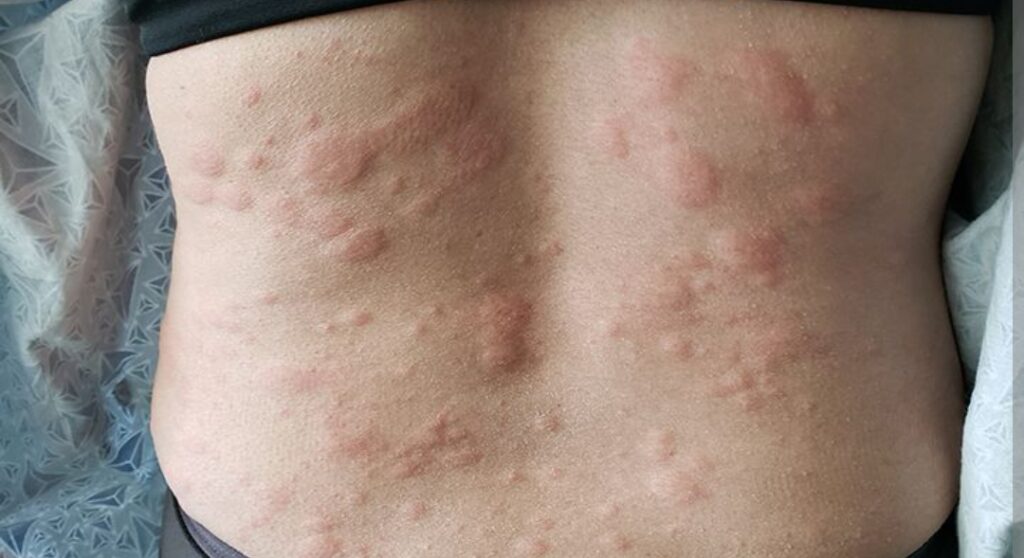
Unlike psoriasis, which is a genetic condition, hives occur as a reaction to a number of possible external factors. You may get hives after an insect bite, or if you have a bad reaction to certain foods or medications. Hives appear as red welts on the skin. They’re typically raised and very itchy.
It’s possible for hives to go away on their own, but in some cases, they last for months. In this case, you’ll need medical help. Your dermatologist may recommend an antihistamine along with topical ointment.
The best way to treat hives is to prevent or avoid them in the first place. Cool, wet compresses and loose-fitting clothes can help relieve the itching and swelling, as can over-the-counter antihistamines.
25. Shingles

The virus that’s responsible for chickenpox also causes this uncomfortable skin condition. In fact, if you’ve already had chickenpox, you have the potential of getting shingles. This is because the virus will lie dormant in your body your entire life.
Shingles result in a rash that typically covers your chest and back. It can also affect your arms and legs. Along with the rash, you’ll likely experience fever and headache.
26. Basel Cell Carcinoma
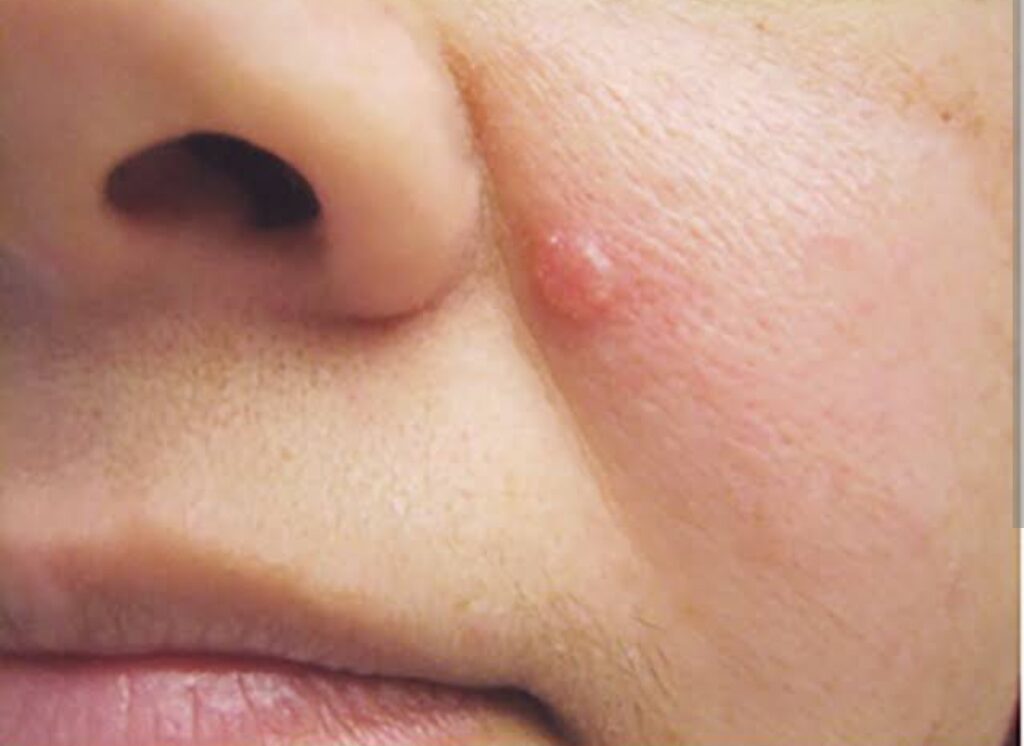
Your epidermis is lined with basal cells whose function is to replenish old skin cells.
Basel cell carcinoma is a type of cancer that affects these cells. While it’s rare for this type of cancer to spread to other areas, it can still cause damage to the infected region.
This type of skin cancer usually affects areas that are frequently exposed to the sun. Tumours on the skin look like sores, bumps, or areas of red discolouration. It’s important to visit your dermatologist immediately if you feel you have basal cell carcinoma.
27. Oily Skin

Just like in food, there are ‘good’ oils and ‘bad’ oils, in skin. The ‘good’ oils are those such as ceramides, which are instrumental in keeping our skin supple and our barrier function healthy. And then there is the oil known as ‘sebum’ which is produced in the second layer of the skin and exits through our pores. The over production of sebum is what results in an ‘oily’ skin type. When treating oily skin, you need to be careful not to strip away the good with the bad.
28. Pseudofolliculitis Barbae/ Razor Bumps
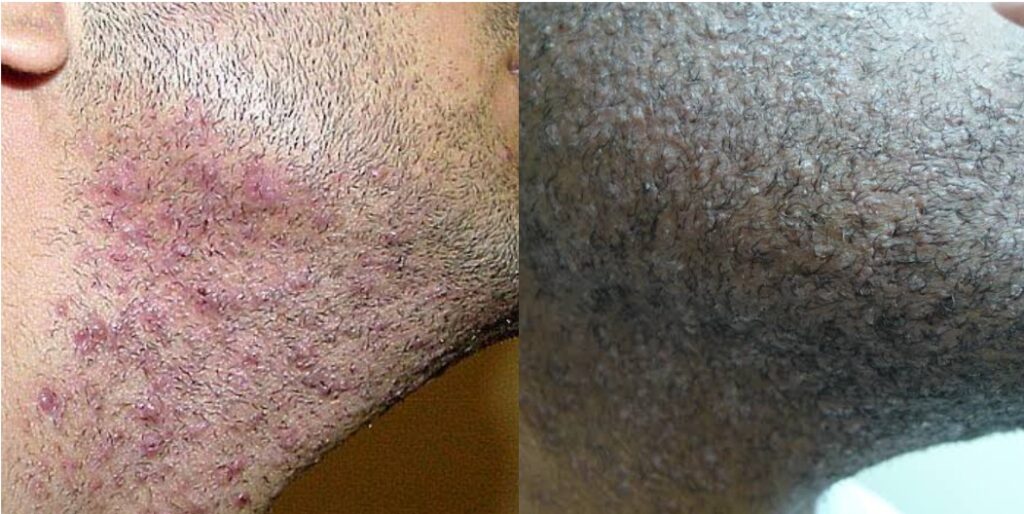
Pseudofolliculitis barbae (PFB), also known informally as razor bumps, is a common, chronic, inflammatory skin condition that occurs as a result of shaving, mainly in men of African descent. PFB is usually characterized by small, painful papules and pustules, but it may progress to scarring and keloid formation in some individuals. Most patients can successfully manage PFB by altering their grooming habits and using available topical and systemic treatment options. If results of other anti-PFB treatments are unsatisfactory, surgical intervention with laser therapy provides a viable option that could result in a cure.
29. Vitiligo
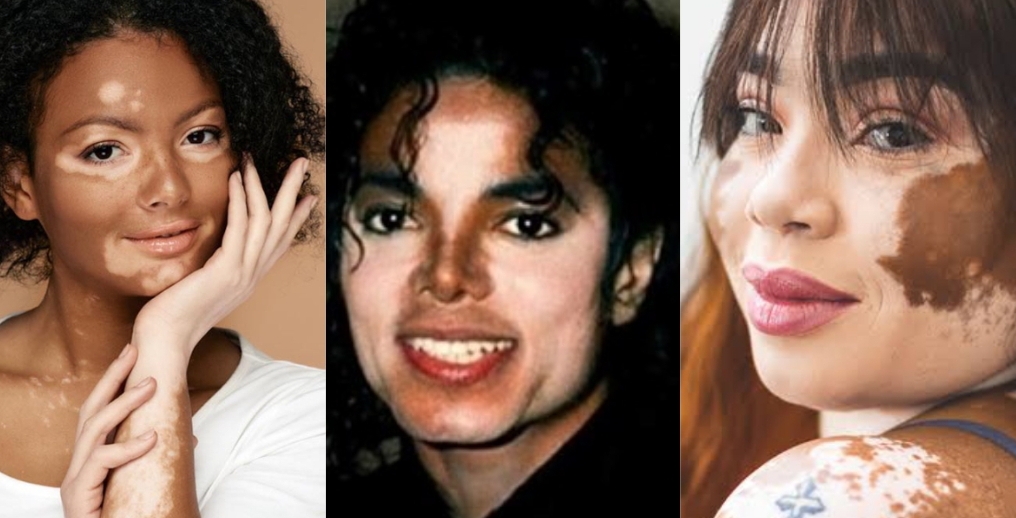
Vitiligo is a skin condition resulting from loss of pigmentation, which produces white patches. While any part of the body may be affected, the most common areas include the face, lips, hands, arms, legs, and genital areas. The exact cause of vitiligo is not known; however, there may be an inherited component. Although treatment is available, there is no single cure.
Treatment: Sometimes the best treatment for vitiligo is no treatment at all. In fair-skinned people, avoiding tanning of normal skin can make areas of vitiligo almost unnoticeable because of the (no pigment) white skin; vitiligo has no natural protection from the sun.
These areas are easily sunburned, and people with vitiligo are at increased risk of skin cancer. They should wear a sunscreen with an SPF of at least 30 on all areas of vitiligo not covered by clothing. Avoid the sun when it is most intense to avoid burns.
30. Atopic Eczema/ Dermatitis
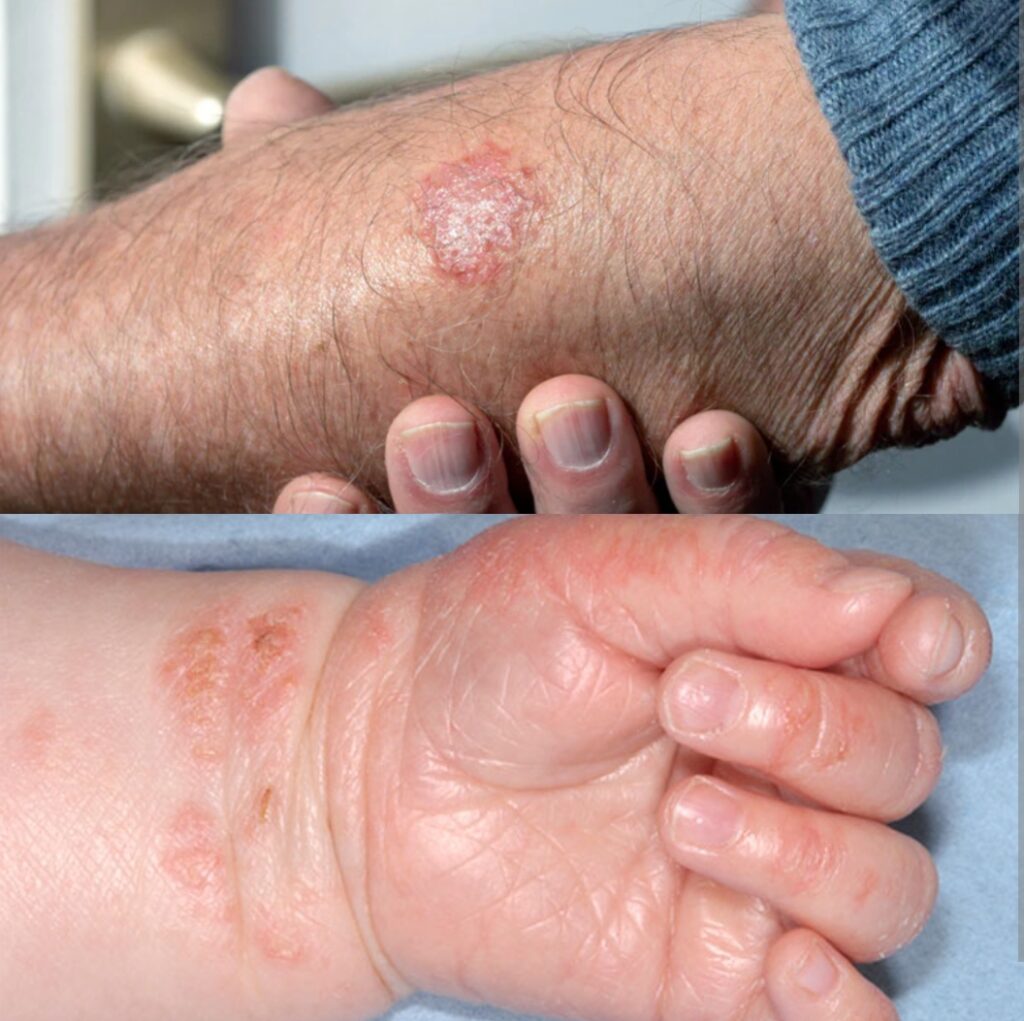
Atopic eczema (atopic dermatitis) is the most common form of eczema, a condition that causes the skin to become itchy, dry and cracked.
The exact cause of atopic eczema is unknown, but it’s clear it is not down to one single thing.
Atopic eczema often occurs in people who get allergies. “Atopic” means sensitivity to allergens.
Treatment: There’s currently no cure and severe eczema often has a significant impact on daily life, which may be difficult to cope with physically and mentally.
